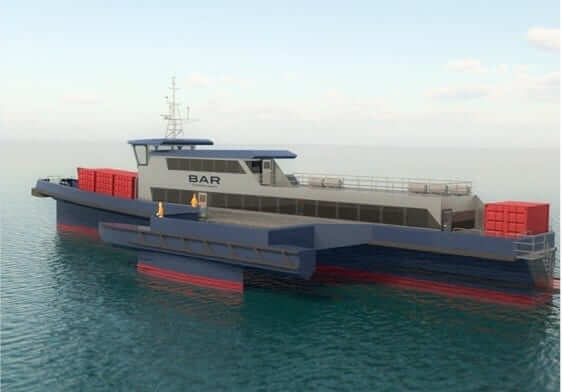BAR Technologies recently debuted the BARTech 50, a new low-emission hull form design capable of long-distance offshore transfer, to help meet the cost reduction and efficiency gains that can be achieved by chartering smaller service accommodation and transfer vessels (SATV) and crew transfer vessels (CTV) to cover offshore wind O&M requirements.
The company says the use of a service operation vessel (SOV) is approximately three times that for a CTV or SATV hull design, with the smaller vessels offering commensurately lower running costs. Similarly, the build schedule for an SOV may take up to several years, versus 12 months for a CTV or SATV.
Moreover, the operational profile of SATVs and CTVs lends itself to more flexible conditions for engineers and vessel crews, BAR says. As the industry seeks to address a skills shortage and bring on new talent, it is essential that it can provide attractive working conditions to technicians and seafarers alike.
“Despite the exponential growth of global offshore wind, and its undeniable future importance to decarbonized electricity, it is also an industry under enormous pressure,” says John Cooper, CEO of BAR Technologies.
“However, there are a number of ways that we can alleviate the cost pressures that, at present, new make investment cases harder,” he explains. “Some of our quickest wins can come from an evolution in vessel use in operations and maintenance activity, where we seem to be focused on following an oil and gas program of large vessels, likely carrying an excess of capacity needed for the task, working offshore for weeks on end.”




